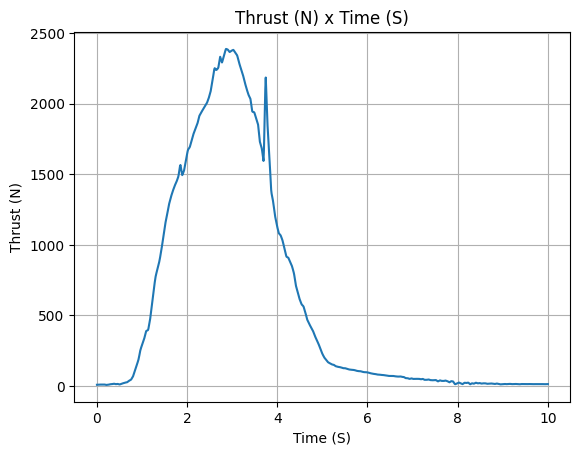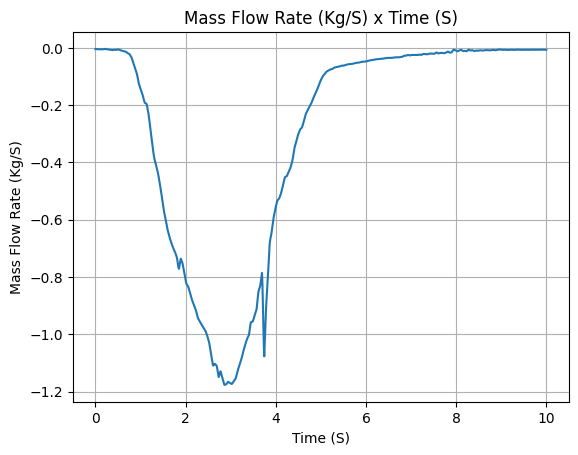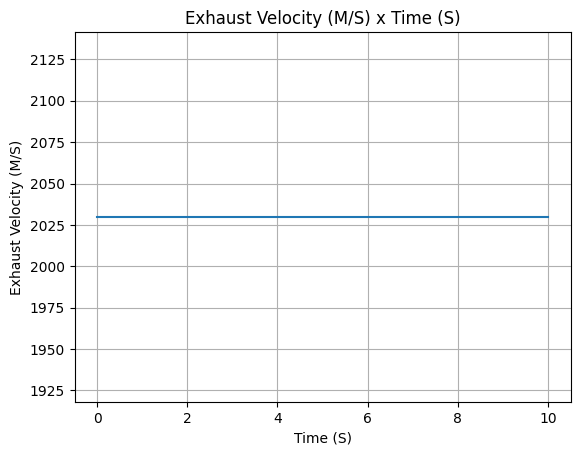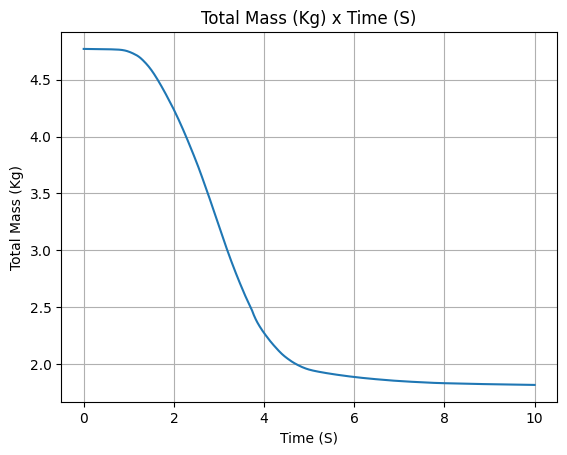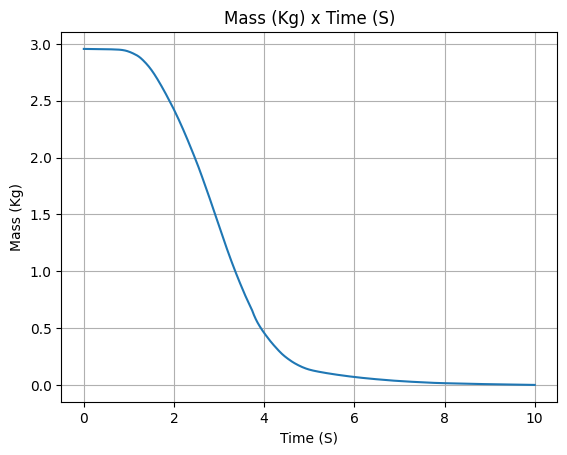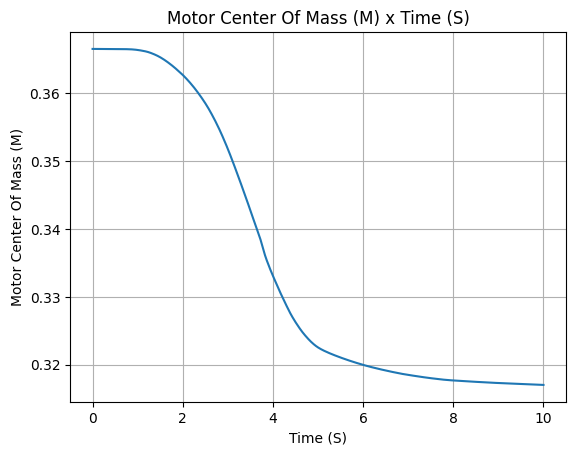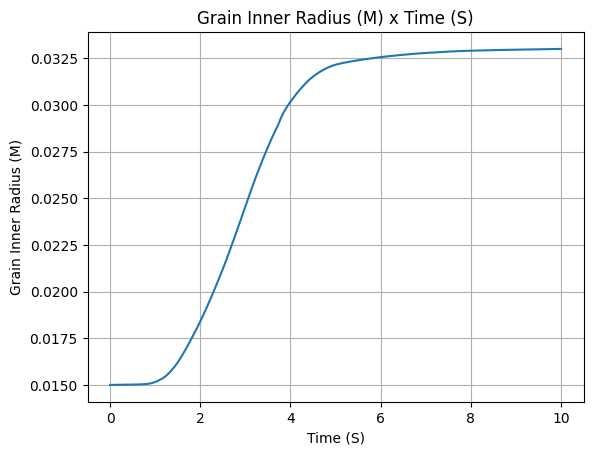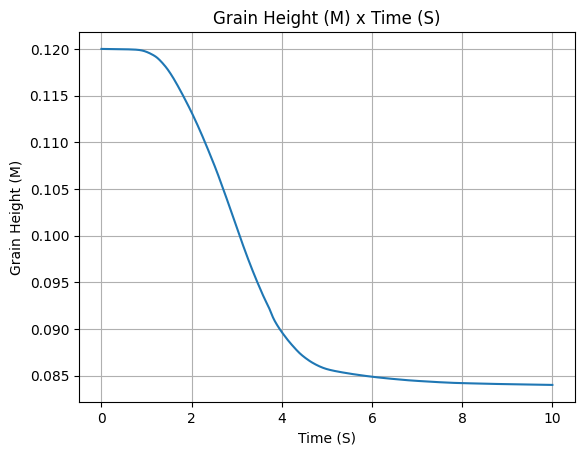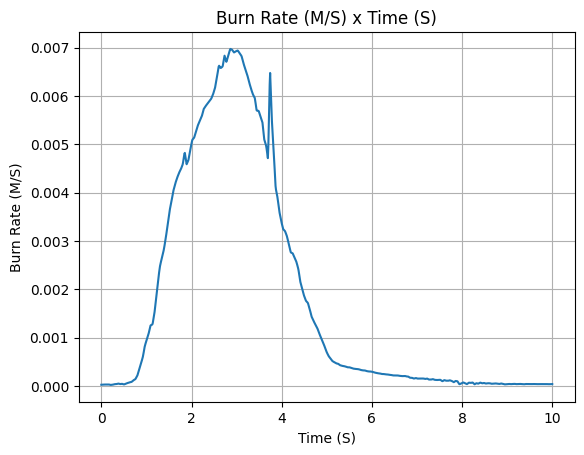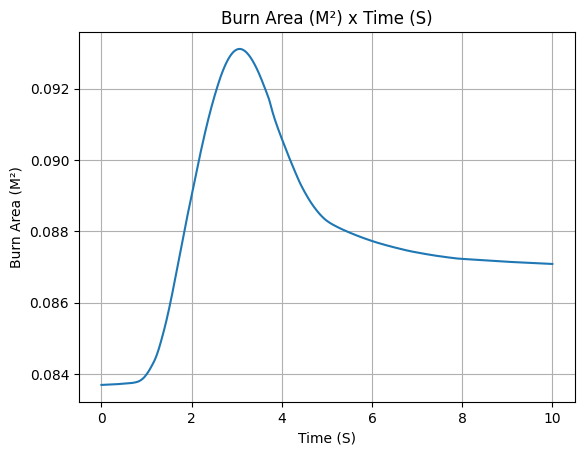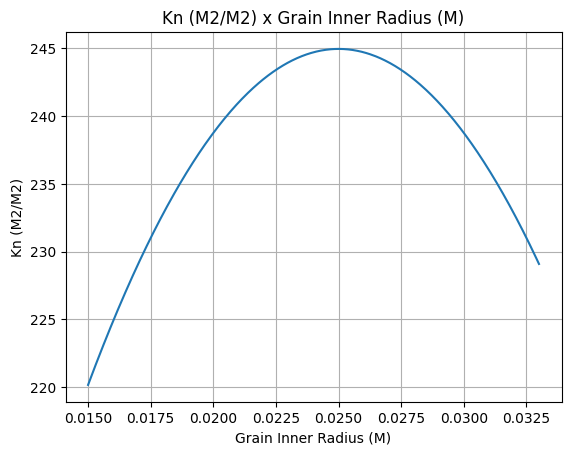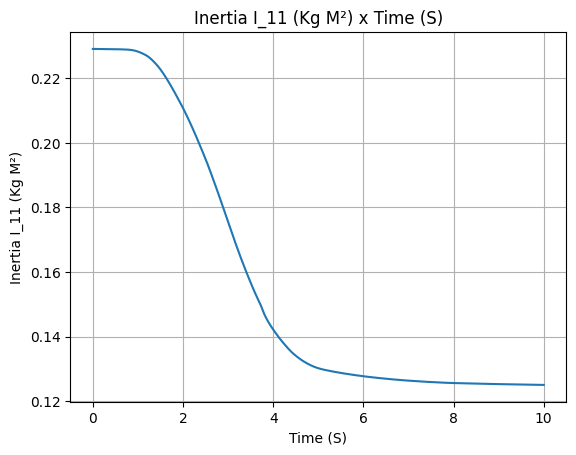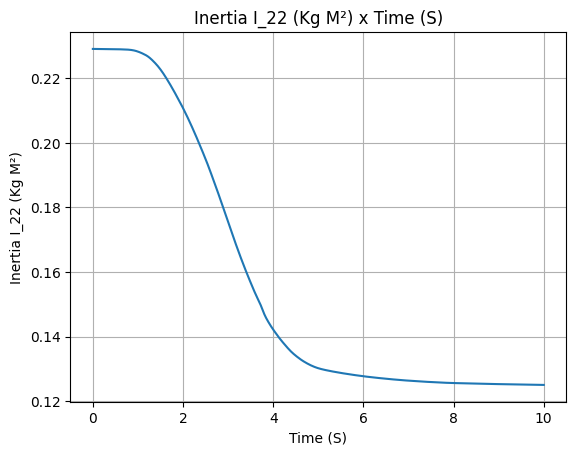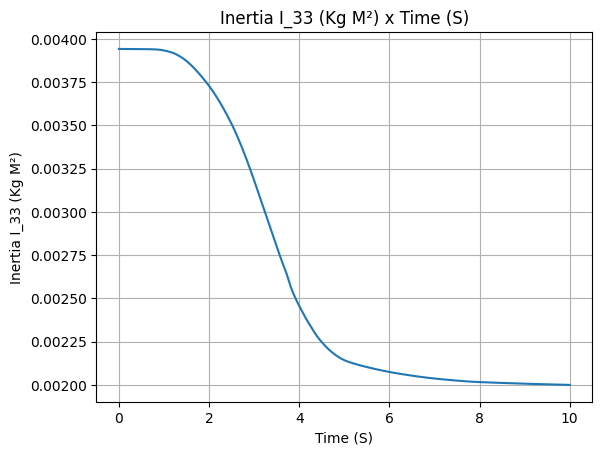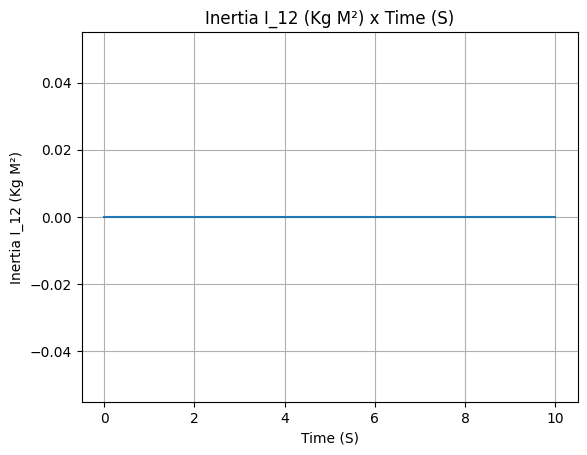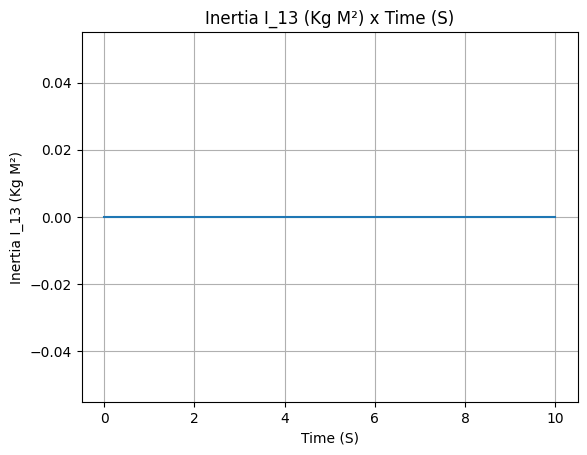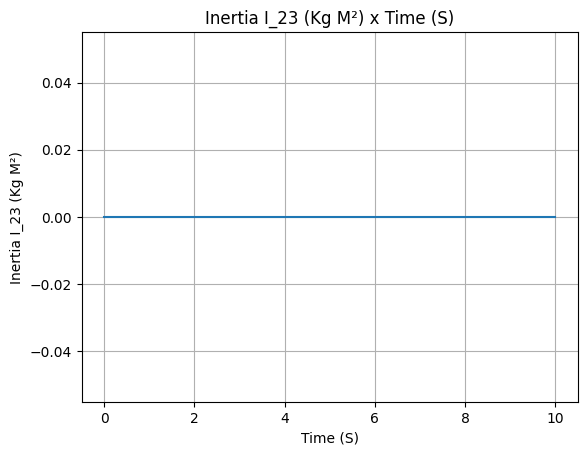Thrust Source#
The thrust source is of most importance when analyzing several trajectory attributes, including the out of rail velocity, thrust to weight ratio, apogee and many others. Let’s create a new motor and take a closer look at this functionality.
Constant Thrust#
When passing an int or float, the thrust will be considered constant in time.
from rocketpy import SolidMotor
solid_constant = SolidMotor(
thrust_source=1500,
dry_mass=1.815,
dry_inertia=(0.125, 0.125, 0.002),
center_of_dry_mass_position=0.317,
grains_center_of_mass_position=0.397,
burn_time=3.9,
grain_number=5,
grain_separation=5 / 1000,
grain_density=1815,
grain_outer_radius=33 / 1000,
grain_initial_inner_radius=15 / 1000,
grain_initial_height=120 / 1000,
nozzle_radius=33 / 1000,
throat_radius=11 / 1000,
interpolation_method="linear",
nozzle_position=0,
coordinate_system_orientation="nozzle_to_combustion_chamber",
)
Let’s call the info() method to see what kind of information we get.
Alternatively, we could use the all_info() method to get a more complete
output.
solid_constant.info()
Nozzle Details
Nozzle Radius: 0.033 m
Nozzle Throat Radius: 0.011 m
Grain Details
Number of Grains: 5
Grain Spacing: 0.005 m
Grain Density: 1815 kg/m3
Grain Outer Radius: 0.033 m
Grain Inner Radius: 0.015 m
Grain Height: 0.12 m
Grain Volume: 0.000 m3
Grain Mass: 0.591 kg
Motor Details
Total Burning Time: 3.9 s
Total Propellant Mass: 2.956 kg
Average Propellant Exhaust Velocity: 1979.085 m/s
Average Thrust: 1500.000 N
Maximum Thrust: 1500.0 N at 0.0 s after ignition.
Total Impulse: 5850.000 Ns
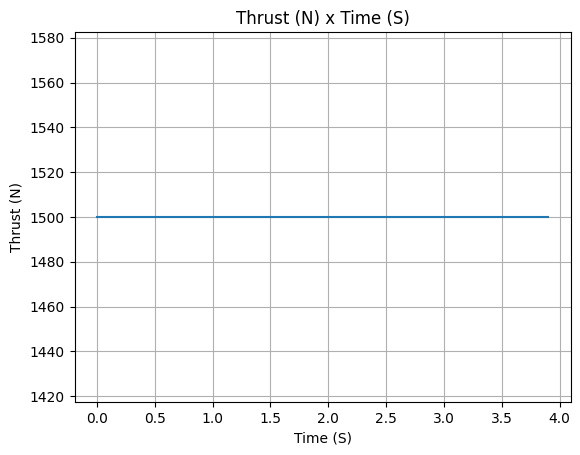
Thrust From Static Firings (CSV Files)#
Usually one has much more precise information about the motor and wishes to specify a directory containing a .csv file.
Note
The first column of the .csv file must be time in seconds and the second column must be thrust in Newtons. The file can contain a single line header.
That can be done as follows:
solid_csv = SolidMotor(
thrust_source="../data/motors/keron/thrustCurve.csv",
dry_mass=1.815,
dry_inertia=(0.125, 0.125, 0.002),
center_of_dry_mass_position=0.317,
grains_center_of_mass_position=0.397,
burn_time=3.9,
grain_number=5,
grain_separation=5 / 1000,
grain_density=1815,
grain_outer_radius=33 / 1000,
grain_initial_inner_radius=15 / 1000,
grain_initial_height=120 / 1000,
nozzle_radius=33 / 1000,
throat_radius=11 / 1000,
interpolation_method="linear",
nozzle_position=0,
coordinate_system_orientation="nozzle_to_combustion_chamber",
)
solid_csv.info()
Nozzle Details
Nozzle Radius: 0.033 m
Nozzle Throat Radius: 0.011 m
Grain Details
Number of Grains: 5
Grain Spacing: 0.005 m
Grain Density: 1815 kg/m3
Grain Outer Radius: 0.033 m
Grain Inner Radius: 0.015 m
Grain Height: 0.12 m
Grain Volume: 0.000 m3
Grain Mass: 0.591 kg
Motor Details
Total Burning Time: 3.9 s
Total Propellant Mass: 2.956 kg
Average Propellant Exhaust Velocity: 474.704 m/s
Average Thrust: 359.790 N
Maximum Thrust: 1068.36 N at 1.508 s after ignition.
Total Impulse: 1403.183 Ns
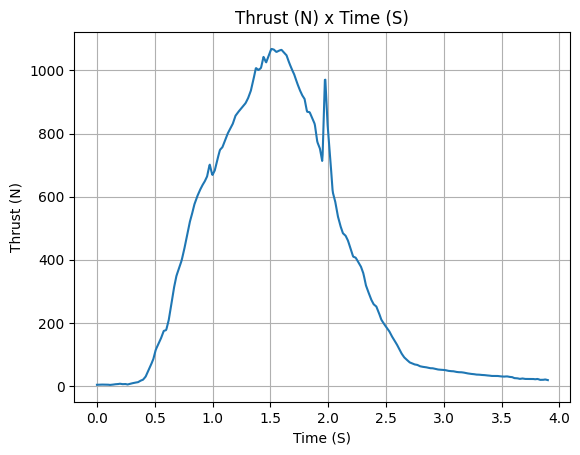
Attention
Beware of noisy data. RocketPy will not filter the data for you.
The thrust curve will be integrated to obtain the total impulse. This can lead to a significant error in the total impulse if the data is too noisy.
Also one is able to specify a certain interpolation method. That can be done by
simply changing the interpolation_method parameter to spline , akima
or linear. Default is set to linear.
Eng Files (RASP)#
Most rocket motors providers share the thrust curve from their motors using
the RASP file format (.eng files). RocketPy can import such files as the
thrust source.
Note
If you have a thrust curve in a .csv file, RocketPy can also read your
data and exported as a .eng file. This can be done by using the
rocketpy.Motor.export_eng() Motor method.
solid_eng = SolidMotor(
thrust_source="../data/motors/Cesaroni_M1670.eng",
dry_mass=1.815,
dry_inertia=(0.125, 0.125, 0.002),
center_of_dry_mass_position=0.317,
grains_center_of_mass_position=0.397,
burn_time=3.9,
grain_number=5,
grain_separation=5 / 1000,
grain_density=1815,
grain_outer_radius=33 / 1000,
grain_initial_inner_radius=15 / 1000,
grain_initial_height=120 / 1000,
nozzle_radius=33 / 1000,
throat_radius=11 / 1000,
interpolation_method="linear",
nozzle_position=0,
coordinate_system_orientation="nozzle_to_combustion_chamber",
)
This time we want to try the all_info() to capture more details about the motor.
solid_eng.all_info()
Nozzle Details
Nozzle Radius: 0.033 m
Nozzle Throat Radius: 0.011 m
Grain Details
Number of Grains: 5
Grain Spacing: 0.005 m
Grain Density: 1815 kg/m3
Grain Outer Radius: 0.033 m
Grain Inner Radius: 0.015 m
Grain Height: 0.12 m
Grain Volume: 0.000 m3
Grain Mass: 0.591 kg
Motor Details
Total Burning Time: 3.9 s
Total Propellant Mass: 2.956 kg
Average Propellant Exhaust Velocity: 2038.745 m/s
Average Thrust: 1545.218 N
Maximum Thrust: 2200.0 N at 0.15 s after ignition.
Total Impulse: 6026.350 Ns

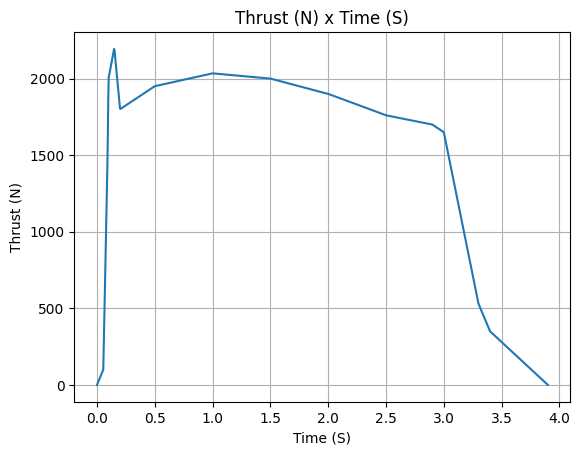
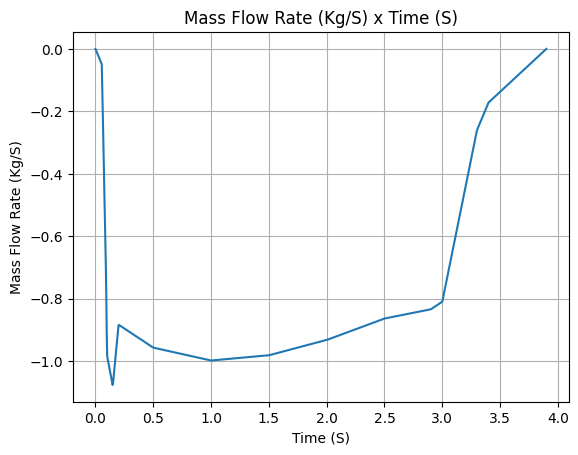
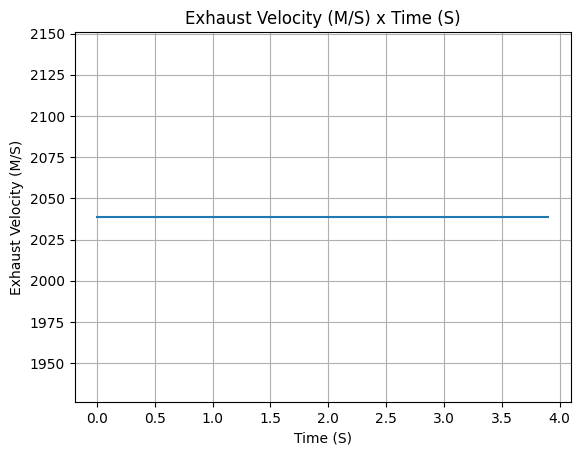
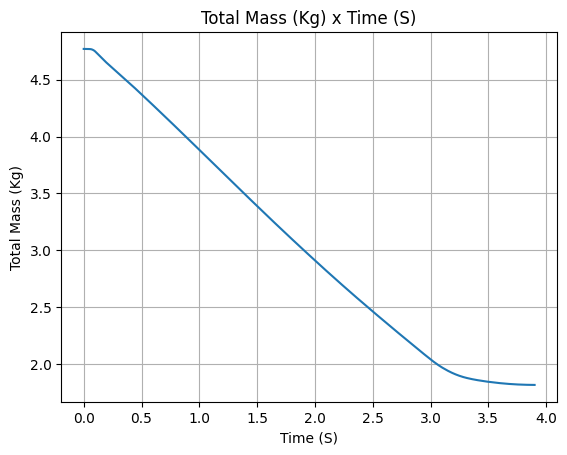
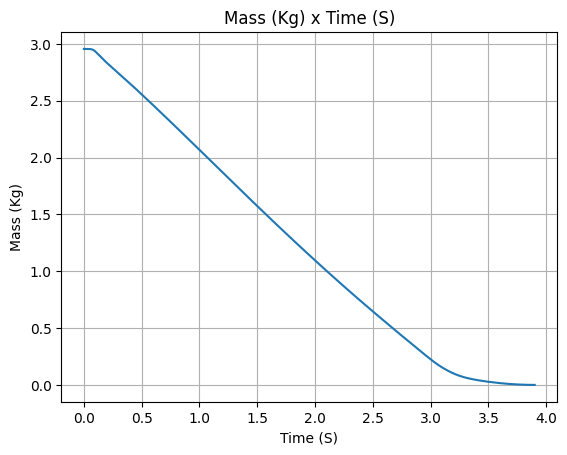
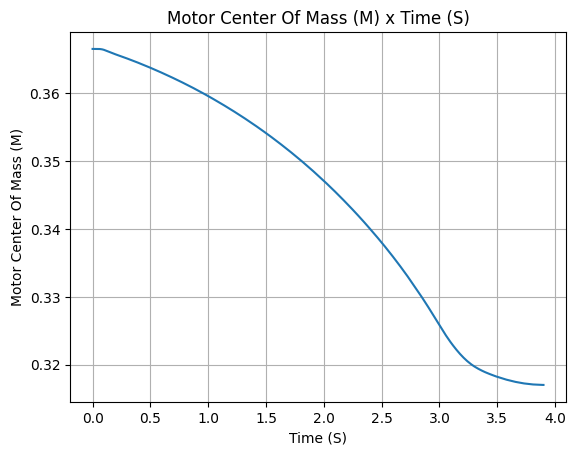
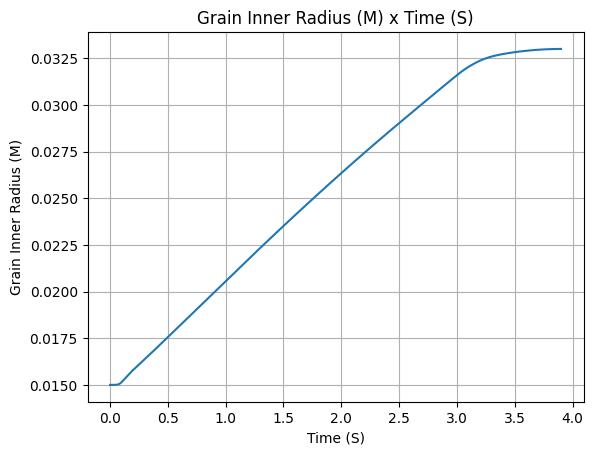
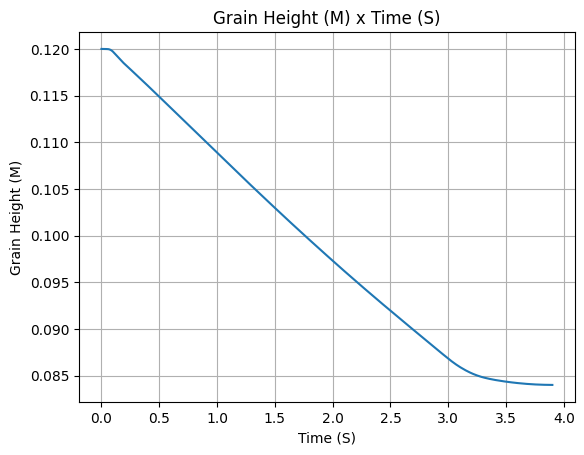
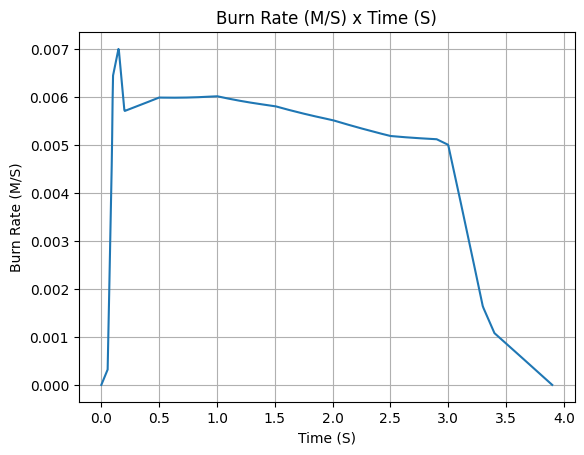
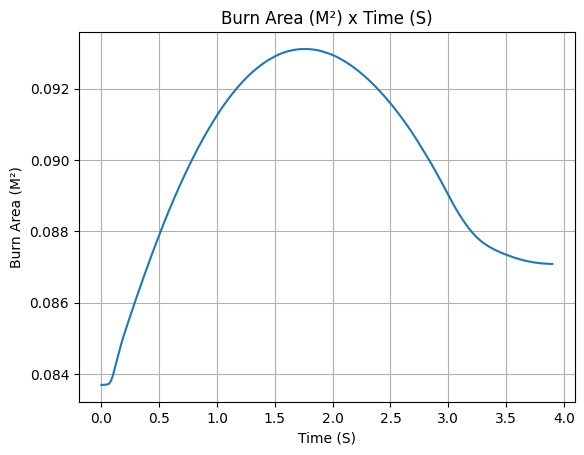
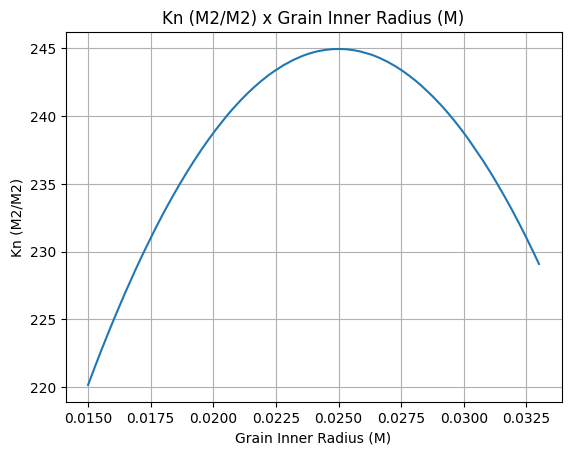
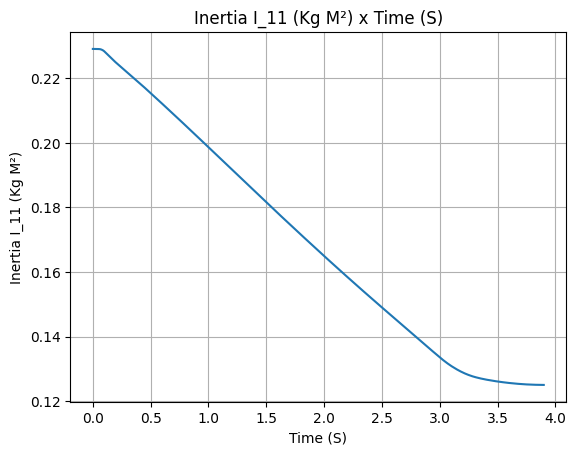
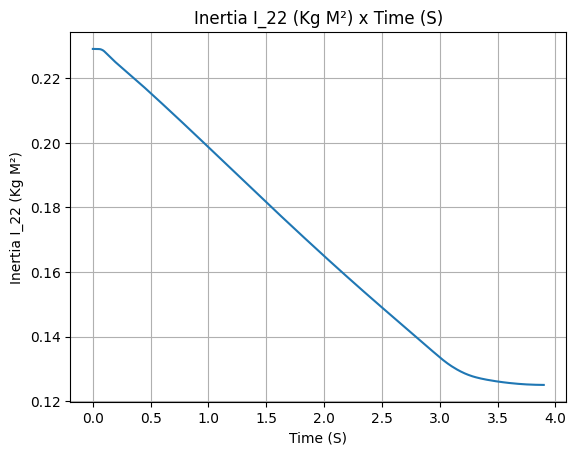
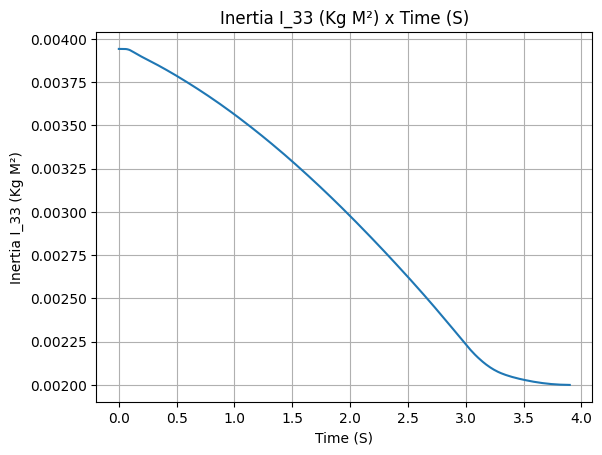
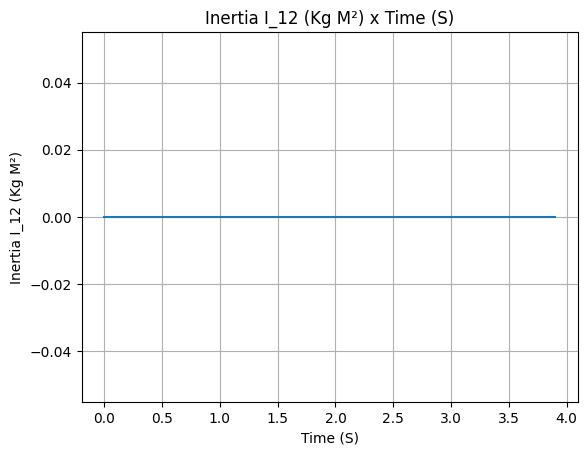
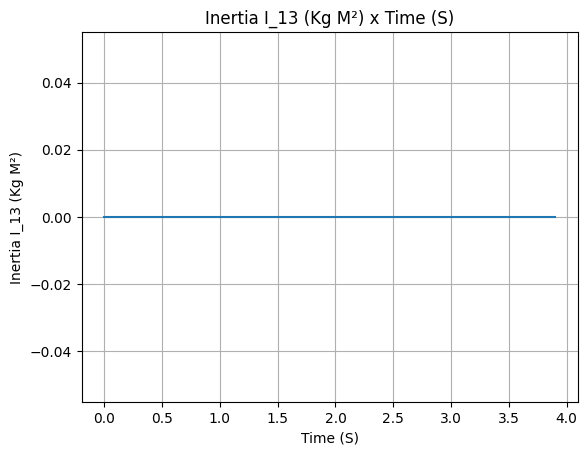
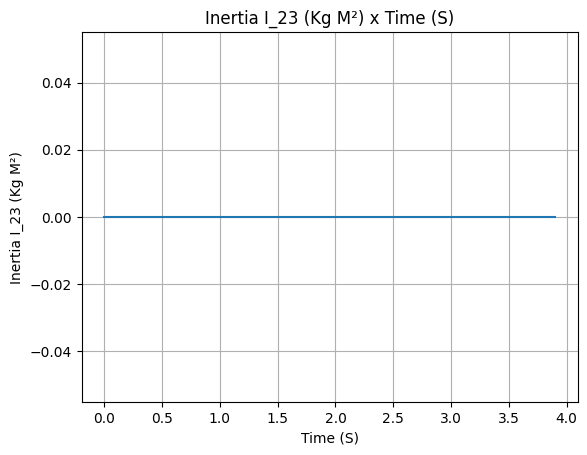
Lambda Functions#
There is also a fourth option where one specifies the thrust source parameter by passing a callable function like below.
Lambda functions are particularly useful in Python, and therefore the SolidMotor class also supports them. Let’s see how to use it.
solid_lambda = SolidMotor(
thrust_source=lambda x: 1 / (x + 1),
dry_mass=1.815,
dry_inertia=(0.125, 0.125, 0.002),
center_of_dry_mass_position=0.317,
grains_center_of_mass_position=0.397,
burn_time=3.9,
grain_number=5,
grain_separation=5 / 1000,
grain_density=1815,
grain_outer_radius=33 / 1000,
grain_initial_inner_radius=15 / 1000,
grain_initial_height=120 / 1000,
nozzle_radius=33 / 1000,
throat_radius=11 / 1000,
interpolation_method="linear",
nozzle_position=0,
coordinate_system_orientation="nozzle_to_combustion_chamber",
)
solid_lambda.info()
Nozzle Details
Nozzle Radius: 0.033 m
Nozzle Throat Radius: 0.011 m
Grain Details
Number of Grains: 5
Grain Spacing: 0.005 m
Grain Density: 1815 kg/m3
Grain Outer Radius: 0.033 m
Grain Inner Radius: 0.015 m
Grain Height: 0.12 m
Grain Volume: 0.000 m3
Grain Mass: 0.591 kg
Motor Details
Total Burning Time: 3.9 s
Total Propellant Mass: 2.956 kg
Average Propellant Exhaust Velocity: 0.538 m/s
Average Thrust: 0.408 N
Maximum Thrust: 1.0 N at 0.0 s after ignition.
Total Impulse: 1.590 Ns
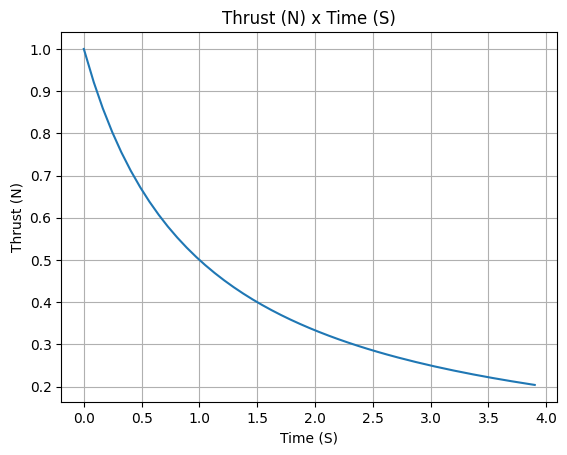
Reshaping and interpolating the thrust curve#
RocketPy can rescale a given curve to match new specifications when impulse
and burn out time are expected to vary only slightly. That can be done by
passing the reshape_thrust_curve parameter as a list of two elements. The
first element is the new burn out time in seconds and the second element is the
new total impulse in Ns.
Here we will reshape the thrust curve by setting the new burn out time in seconds to 10 and the new total impulse to be 6000 Ns.
solid_reshaped = SolidMotor(
thrust_source="../data/motors/keron/thrustCurve.csv",
dry_mass=1.815,
dry_inertia=(0.125, 0.125, 0.002),
reshape_thrust_curve=[10, 6000],
center_of_dry_mass_position=0.317,
grains_center_of_mass_position=0.397,
burn_time=3.9,
grain_number=5,
grain_separation=5 / 1000,
grain_density=1815,
grain_outer_radius=33 / 1000,
grain_initial_inner_radius=15 / 1000,
grain_initial_height=120 / 1000,
nozzle_radius=33 / 1000,
throat_radius=11 / 1000,
interpolation_method="linear",
nozzle_position=0,
coordinate_system_orientation="nozzle_to_combustion_chamber",
)
Pay close attention to the newly generated curve and be aware of the changes the rescale has produced regarding the physical quantities.
solid_reshaped.all_info()
Nozzle Details
Nozzle Radius: 0.033 m
Nozzle Throat Radius: 0.011 m
Grain Details
Number of Grains: 5
Grain Spacing: 0.005 m
Grain Density: 1815 kg/m3
Grain Outer Radius: 0.033 m
Grain Inner Radius: 0.015 m
Grain Height: 0.12 m
Grain Volume: 0.000 m3
Grain Mass: 0.591 kg
Motor Details
Total Burning Time: 10.0 s
Total Propellant Mass: 2.956 kg
Average Propellant Exhaust Velocity: 2029.830 m/s
Average Thrust: 600.000 N
Maximum Thrust: 2388.940104826747 N at 2.8593098217671598 s after ignition.
Total Impulse: 6000.000 Ns

